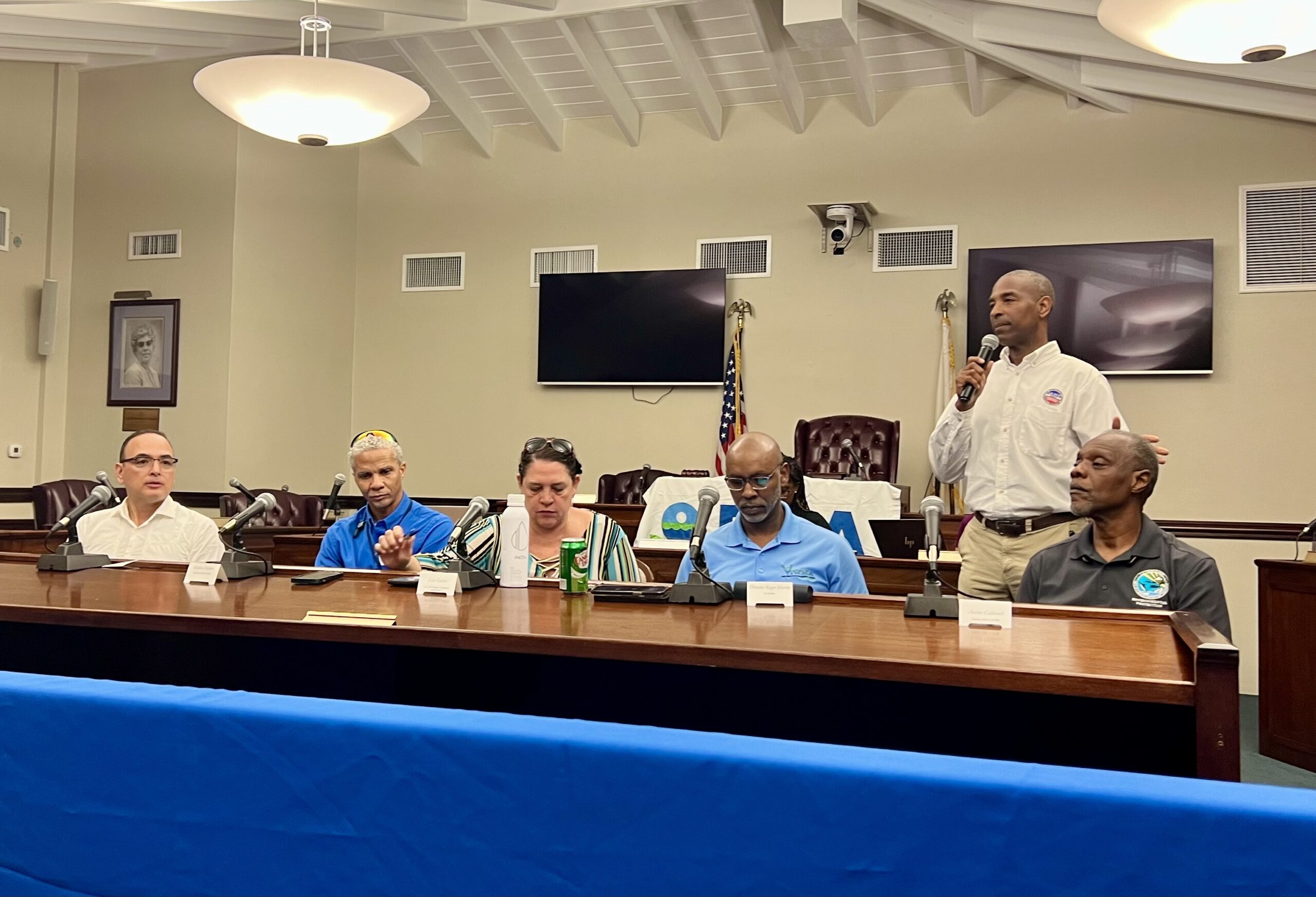
When officials from the Environmental Protection Agency invited St. John residents to share their concerns about waste disposal and other matters on Tuesday night at the Legislative Annex, they got an earful.
Dozens of St. John residents — and a few from St. Thomas — came to question officials from the EPA, the Department of Planning and Natural Resources, and the V.I. Waste Management Authority about long-running environmental concerns.
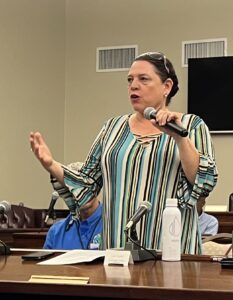
Although audience members were given no timetables or immediate solutions to their concerns, EPA Region 2 Administrator Lisa Garcia assured them that officials heard their complaints. “Some of these problems do take time. We have reporting requirements, and inspections take time,” she said.
Garcia began the meeting by saying that funding was available through the Inflation Reduction Act and other Biden Administration initiatives to promote clean air, water, and landfill practices as well as sources of alternative energy and climate change mitigation.
But residents were skeptical that the island’s problems are being addressed. “The funding doesn’t get to where it should be going,” said Judith Kane. “The feds give us money, but we don’t get much satisfaction.”
Roger Merritt, director of the V.I. Waste Management Authority, said his agency was set to receive $6 million, and DPNR would receive $4 million in funding to tackle environmental problems in the territory.
Projects for WMA include the construction of convenience centers to sort and recycle waste products; one is slated for the site of the Susannaberg Transfer Station on St. John.
But before the grant money can be handed over, WMA has to hire at least two staff members with knowledge of sustainability practices in the coming months to manage the grants, Merritt said.
Among the first to speak about specific environmental concerns was Catherine Stephen, who operates a business directly across the street from the Cruz Bay sewage treatment plant.
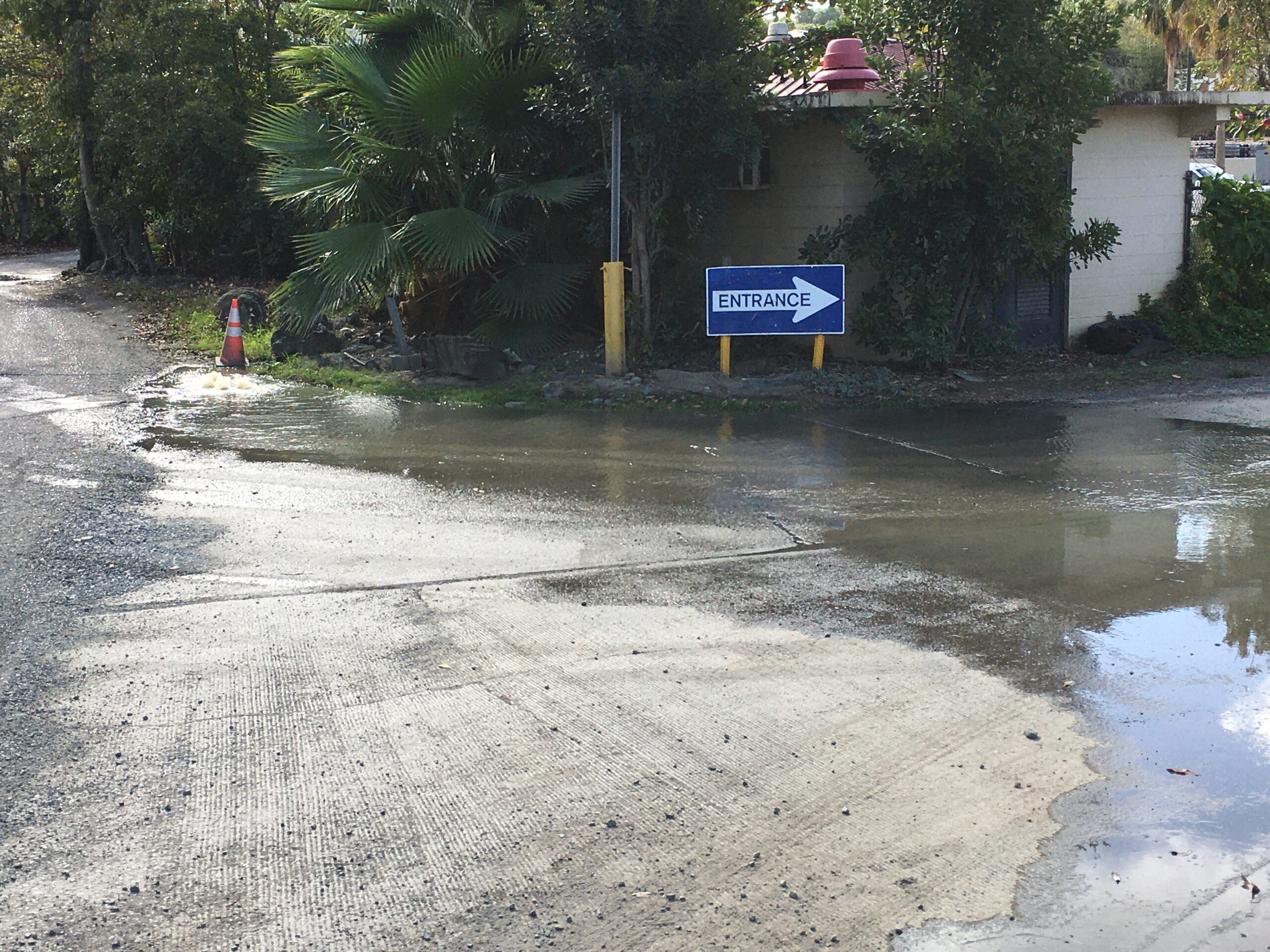
“The stench has been so bad at times, I’ve had to close the business,” Stephen said. “I’ve had employees walk away from the job. Cars go by, splashing water in puddles — which is really sewage — and contaminating (our property). Is there any money for that sewage treatment plant?”
Before she could get a response from officials, Annette Small, a resident of nearby Pond Mouth, stood up to give “a personal story” about the failing lift station, which caused a manhole in her yard to overflow with raw sewage. “I can’t sleep. This has been going on all of my life. At our next-door neighbor’s, the sewage backs into their house.”
“We have been doing upgrades, Merritt responded, “in Cruz Bay and at George A. Simmons Terrace (a housing community three miles east on Centerline Road). We’ve put in blowers and purchased a sewage truck. I live on St. John, too. Things are happening, but you may not see it. We have a contractor working on relocating new lines.”
Merritt introduced Keith Smith, the territory’s new manager of wastewater. “We have embarked on an optimization plan,” said Smith. “On St. John, we have designs and upgrades. Call me,” he said, “I’m going to work with you.”
But another Pond Mouth resident was skeptical. “I have a file this thick,” said Sylvia Kurdirka, Small’s neighbor, who has been registering her complaints with officials and with the media for years.
Garcia agreed that communication with residents could be improved and proposed that the EPA prepare a fact sheet to update meeting attendees with the agency’s progress on these projects.
Residents then raised a slew of concerns about the degraded quality of the water in bays around the island. Myrtle Barry, who grew up near Great Cruz Bay, said she and her family no longer swim in the bay, which used to be full of fish, whelks, corals, and other sea life.
Barry said she has repeatedly contacted officials about a white milky substance that appears on the surface of the bay “and is killing wildlife.”
Jim Casey, V.I. coordinator for the Caribbean Environmental Protection Division of the EPA, confirmed that he has footage of the mysterious substance. He has kept a log of Barry’s submittals and had shared the information with DPNR’s Division of Environmental Protection. “We cannot ascertain where it comes from,” Casey said, adding the matter has to “get the attention of upper management.”
Theodora Moorehead brought up the subject of poor water quality in Cruz Bay and Coral Bay, two of the four anchorages on St. John under the territory’s jurisdiction. She asked why there were no mobile sewage pump-out vessels to serve the boating community.
Marlon Hibbert, director of Coastal Zone Management, said there was one pump-out vessel on St. Thomas that was struggling to stay in business. “The trouble is you have to pay (for this service), and nobody wants to pay.”
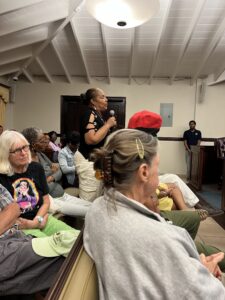
St. John community activist Lorelei Monsanto said the problem could be solved if the territory established harbormasters who could keep track of boats that remain at their anchorages; those boats that don’t regularly go three miles out to sea to empty their holding tanks could be cited. ”Hire me, Mr. Hibbert,” she said. “I’ll take my rowboat out.”
Hibbert said neither of the two boats used by DPNR for environmental enforcement and protection are working, and DPNR has not been able to borrow boats from other agencies to monitor the 5,000 vessels using territorial waters.
“You’re telling me that the pollution will continue until we can’t bathe in any of our waters?” asked Moorehead. “If you’re committed, you can find a way.”
Residents also brought up a number of apparent violations on land, including possible zoning violations, illegal tree removal, and the failure to remove plastic siltation curtains when construction has been completed.
Farmers Laura Martin and Hugo Roller Sr. asked officials to move forward on stalled plans to bring composting to the island. “All we need is a quarter of an acre to lease,” said Martin. “We would really like some support.”
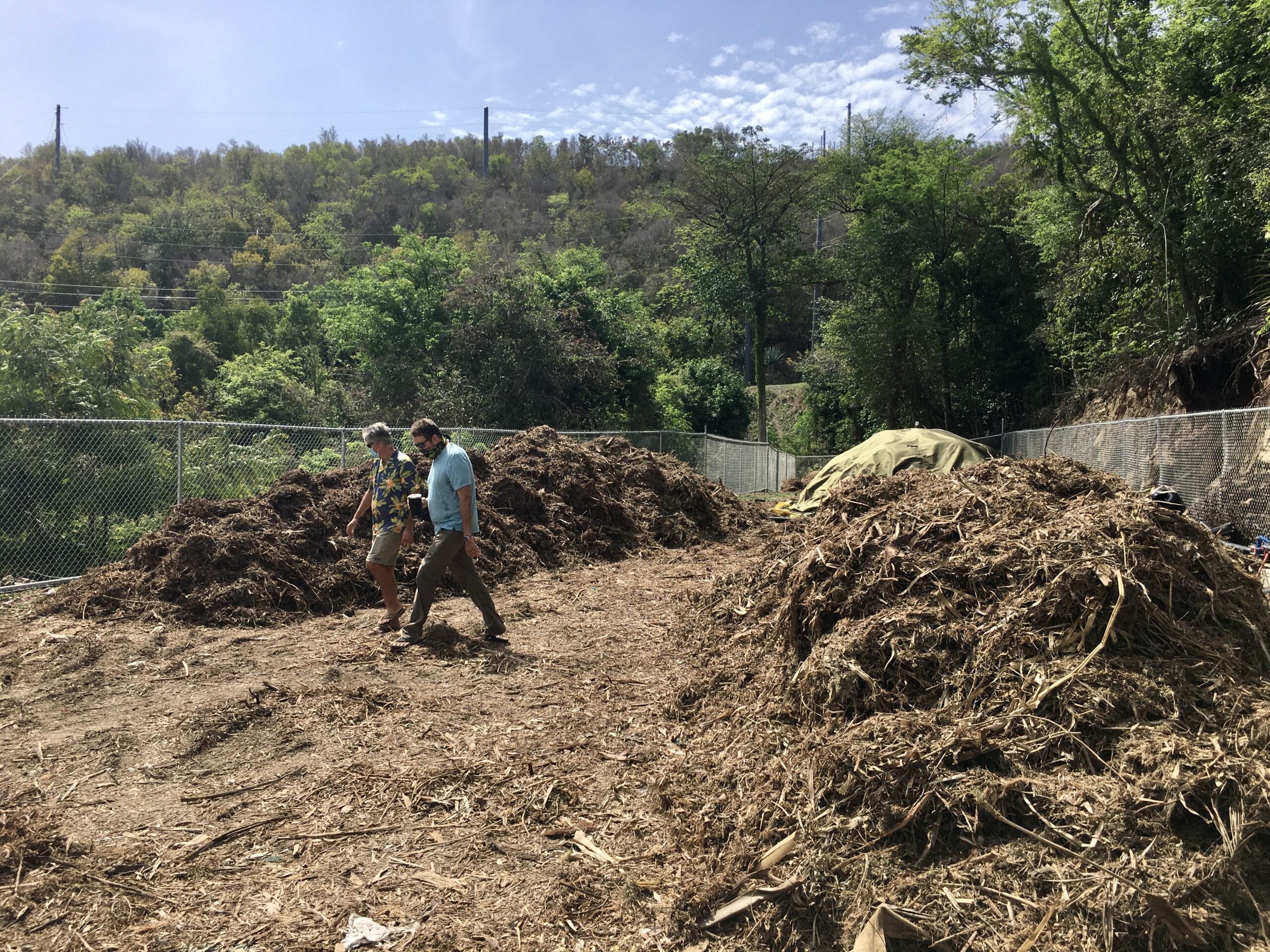
Island Green Living Association conducted a successful brush chipping and composting pilot program on St. John, according to Executive Director Kelly McKinney.
Tiffany Muse called for using the Gore system, which can convert the waste from the horse track and other stables to usable compostable material.
Myrtle Barry, one of the owners of E & C Service Station, also voiced concerns about the lack of facilities to collect and dispose of used tires and batteries. She said E & C has been doing this for their customers but can’t take on the task of meeting the needs of the entire island.
Merritt said the territory has a million tires awaiting disposal, and that the Legislature needs to take action to establish tire redemption fees at the point of sale to cover the costs of bailing the tires and shipping them off island. He said the convenience centers now being planned will include facilities to dispose of used batteries.
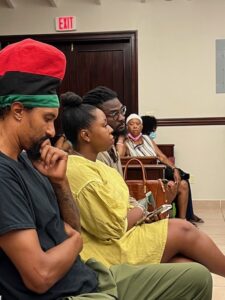
Hadiya Sewer, president of St.JanCo., the community organization that co-hosted Thursday’s meeting, asked EPA officials about community engagement over time. Kurt Marsh, vice-president of St.JanCo, said community engagement has to go beyond just sending out an email.
Claude Walker, senior advisor to Garcia, said the EPA has four staff members, including himself, who are based in the islands and are available to hear the public’s concerns. He also gave out the email address for Philip Parker, the territory’s New York-based liaison for Region 2: parker.philip@epa.gov.
After the meeting ended at 8 p.m., audience members swarmed officials to continue discussing their concerns.


